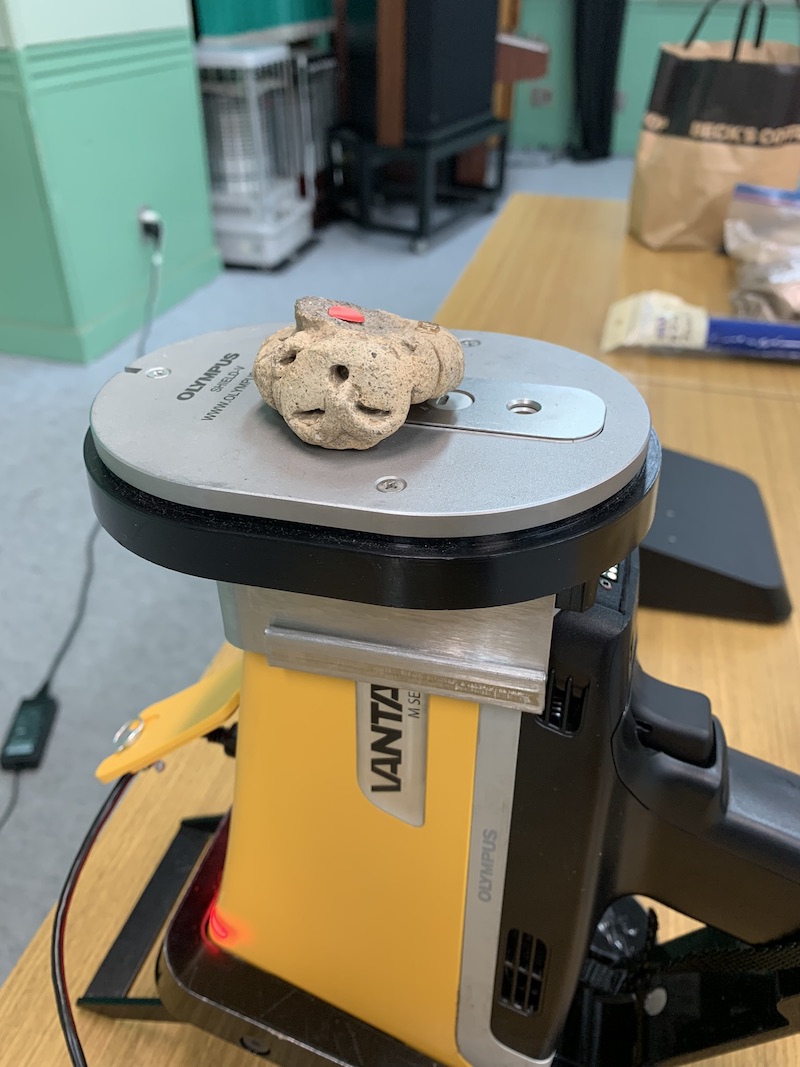
Are you a STEM enthusiast? Do you want to know how current research allows us to look into the past and unlock hidden information in artefacts?
Do you have photos to share? Click here to share them with us!
Come along to our very first Festival of Neolithic Ideas on 11th and 12th November and get involved with an outstanding programme of hands-on activities, demonstrations, talks and tours.
"By combining our strengths, the University of Cambridge's Department of Archaeology and English Heritage present how contemporary science helps us to know more about the past. Archaeological science and heritage will showcase here the way mathematics, statistics, organic and inorganic chemistry, physics and biology are part of human stories and go beyond 'boring' static knowledge transfer. The global view on the Neolithic presented here by the cutting-edge research conducted by Cambridge archaeologists shows how STEM subjects are an integral part of learning about our present and the past."
- Dr Liliana Janik, Assistant Director of Research, Cambridge University Department of Archaeology, Fellow of Girton College and Deputy Director of Cambridge Heritage Research Centre.
The Festival is aimed at anyone with a curious mind, young or old.
The Festival of Neolithic Ideas is an event run in partnership between English Heritage and the Department of Archaeology, University of Cambridge.
The event will take place at Stonehenge on Saturday 11th and Sunday 12th November 2023, from 10am until 5pm. Tickets are bookable through English Heritage.
Kindly supported by the Arts and Humanities Research Council and the McDonald Institute for Archaeological Research.
See below for the range of exciting hands-on activities that our researchers will be running throughout the Festival.
Agent-Based Modelling is a software tool frequently used in Computational Archaeology. Researchers develop a virtual world where they can explore the interaction of different factors and the outcomes they produce. It creates a reliable testing ground for new ideas and methods in archaeology.
In this activity, we will look at different agent-based models, how they work, their outputs, and how they are used to improve archaeological inference. We will use (and play with) the software NetLogo, developed at this effect. We look forward to organising groups of volunteers to play in the live games of agent-based modelling.
Lead researcher: Dr Alfredo Cortell-Nicolau
Where are you from? How far have you moved in your lifetime? In Archaeology, we can learn a lot from finding out how far people moved, and where they came from. But how can we work that out, when we can’t ask them? We can measure chemical signals in past people’s teeth, locked into the tooth enamel itself.
You will learn what signals we can measure, what they can tell us, and what are the challenges involved. We’ll find out what would be your likely "IsoTribe", and compare you to prehistoric people buried in southern England.
Lead researcher: Dr Tamsin O'Connell
STEM Link - Key Stage 4 Physics: Students begin to learn about isotope characteristics.
We see, we hear, we feel and we smell. People in the past used these sensory experiences to help them identify differences in materials based on which they made important inventions or created things that were left behind in the material records.
In this activity, we will explore the relationship between sensory experiences and materials’ properties. We will look into the ability of metals to change colour when subjected to heat by turning copper coins into ‘gold’ and ‘silver’ ones. We will also explore the softness of copper and turn it into beautiful jewellery.
Lead researcher: Dr Carmen Ting
What can the human skeleton tell us about life of people in the past?
Our osteoarchaeologists will show you how we create osteobiographies of the dead through respectful scientific examination of bones to learn about age, sex/gender, burial treatment, occupation, and diet and health, through hands-on activities.
Lead researcher: Dr Trish Biers
STEM Link - Key Stage 3 Biology: Students study the structure and functions of the human skeleton.
Interested in this research? Read more here:
How do we know that there was an exchange of ideas, technologies, and movement of people in the past? Where do they come from and where do they go? are some of the questions that we try to answer when thinking about how technologies and knowledge have spread.
Based on the chemical composition of the clays used to make prehistoric figurines and their fragments, we can identify if the clay objects are of local production or were brought from other parts of the region. This allows us to build the social network of communication, knowledge exchange and the use of figurines as evidence.
Lead researcher: Dr Liliana Janik
STEM Link - Key Stage 3 Chemistry: Students learn about properties of ceramics.
Interested in this research? Read more here:
Image credit: English Heritage
A cosy fire, a bowl of porridge, a basket of fruit, a warm, dry house, a comfy bed, and a cup of beer – a recipe for a happy life! But what do all these wonderful things have in common? The answer is that not only did people enjoy them thousands of years ago in the Neolithic period, but they were all made using plants, some of which were new arrivals in Britain at the time. From microscopic pollen grains to tree trunk trackways, and all the burnt dinners in between, we’ll be exploring the wonderful world of plants, and how archaeologists know how people used them in the past.
Lead researcher: Dr Rebecca Roberts













